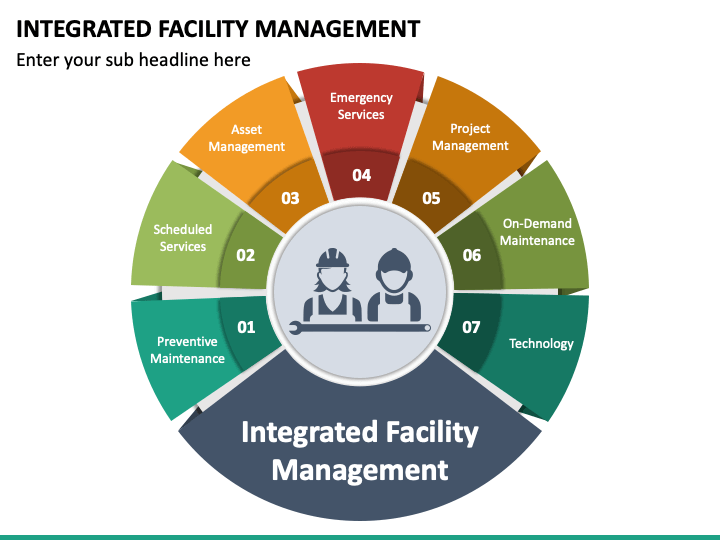Total Facility Management: A Comprehensive Solution for Building Maintenance
Total Facility Management: A Comprehensive Solution for Building Maintenance
Blog Article
Top Benefits of Total Facility Management for Streamlined Procedures
Total Facility Management (TFM) stands for a critical approach to enhancing operational effectiveness by integrating various services, such as maintenance and protection, under a unified management framework. The concern stays: what certain benefits can organizations harness from adopting TFM, and how might these benefits transform their operational landscape?
Improved Functional Effectiveness
Boosted operational performance is a primary benefit of executing total facility management (TFM) strategies. TFM encompasses a detailed approach to taking care of a center's resources, procedures, and facilities, inevitably simplifying procedures. By consolidating numerous services-- such as upkeep, room, cleaning, and security management-- TFM enhances and lessens redundancies coordination amongst various functional functions.
The combination of technology more intensifies this efficiency. Advanced facility management systems give real-time data analytics, making it possible for facility managers to make enlightened decisions that boost process and resource allotment. Predictive upkeep methods, for instance, expect equipment failings prior to they take place, minimizing downtime and extending possession life-span.
In addition, TFM advertises standardized procedures throughout various divisions, ensuring consistency and top quality in service shipment. This uniformity reduces operational disturbances and promotes a more joint functioning setting. Therefore, employees can concentrate on their core duties, driving performance and improving total efficiency.

Cost Decrease and Cost Savings
Applying total facility management (TFM) not only increases functional performance but additionally considerably contributes to cost reduction and savings. By combining numerous solutions under a single management framework, organizations can get rid of redundancies and simplify processes, consequently lowering operational expenses. TFM makes it possible for better procurement techniques, allowing companies to work out bulk getting arrangements with vendors and service companies, leading to reduced costs.
In addition, TFM highlights precautionary maintenance, which lessens unforeseen break downs and expands the life-span of important tools. This aggressive approach not just lowers fixing costs yet also enhances the dependability of facilitiess, making sure uninterrupted operations. Furthermore, power effectiveness initiatives, frequently an essential emphasis of TFM, result in substantial cost savings on utility costs, as facilitiess are optimized for decreased power usage.
Improved Resource Management
Efficient resource management is a foundation of total facility management (TFM), making it possible for organizations to enhance using their properties and labor force. By carrying out TFM methods, organizations can comprehensively assess their source allocation, making sure that every asset is utilized successfully and efficiently. This all natural method enables the identification of underperforming sources and the potential for reallocation or enhancement.
In addition, TFM assists in the integration of innovation for real-time surveillance of resources, which assists in forecasting maintenance demands and preventing costly downtime. By leveraging information analytics, companies can make informed choices about source deployment, inevitably enhancing performance and decreasing waste.
Furthermore, TFM advertises a society of constant enhancement, urging teams to on a regular basis assess and fine-tune their source management methods. Total Facility Management. This positive stance not just reduces functional disruptions yet additionally promotes advancement, as workers are equipped to suggest enhancements based on their direct experiences with source use
Streamlined Interaction Channels
In total facility management, structured interaction channels play an essential duty in promoting partnership and performance across teams. Effective communication makes certain that all stakeholders, including facility managers, maintenance staff, and service companies, are aligned with functional demands and business objectives. By establishing clear lines of interaction, teams can my review here quickly resolve concerns, share updates, and carry out services, thereby lessening downtime and improving efficiency.
With streamlined interaction platforms, information is conveniently available, permitting real-time updates on upkeep demands, source allowance, and job timelines. This transparency not just minimizes misconceptions but additionally encourages staff members to make enlightened decisions swiftly. In addition, streamlined interaction assists in far better coordination during emergencies, making certain that all personnel are notified and can react promptly.

Raised Concentrate On Core Activities
A crucial benefit of total facility management is the increased emphasis on core activities, permitting organizations to concentrate on their key service goals - Total Facility Management. By outsourcing non-core functions such as protection, maintenance, and cleansing, business can reroute their resources and energy towards critical campaigns that straight add to their competitive advantage and growth
Total facility management incorporates numerous operational tasks under a single umbrella, promoting efficiency and lessening redundancy. find more This loan consolidation not just streamlines processes yet also enhances accountability, ensuring that every facet of the facility operates sympathetically without diverting focus from what truly matters-- core business features.
Furthermore, this method enables workers to dedicate their time and efforts to jobs that drive development and improve consumer complete satisfaction, instead of obtaining slowed down by functional challenges. With a dependable facility management companion taking care of daily procedures, organizations can accomplish higher dexterity, react quickly to market adjustments, and keep a sharper concentrate on their goal.
Eventually, enhanced focus on core activities results in boosted general performance, permitting companies to reinforce their market setting and satisfy their calculated goals better. - Total Facility Management
Final Thought
In final thought, Total Facility Management considerably improves operational effectiveness by consolidating vital solutions and leveraging data analytics for educated decision-making. Cost reductions and boosted resource management add to overall savings, while streamlined interaction networks foster cooperation among stakeholders.
Total Facility Management (TFM) represents a strategic method to boosting functional effectiveness by incorporating various services, such as maintenance and protection, under a unified management structure.Improved functional performance is a main advantage of implementing total facility management (TFM) strategies. Advanced facility management systems offer real-time data analytics, making it possible for facility managers to make enlightened decisions that improve operations and resource appropriation.Executing total facility management (TFM) not only boosts operational efficiency but also considerably adds to set you back decrease and cost savings.Reliable visit this web-site resource management is a foundation of total facility management (TFM), enabling organizations to optimize the use of their possessions and workforce.
Report this page